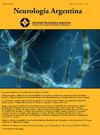并非所有的眼眶炎症都是蜂窝组织炎:颈动脉-海绵状瘘管病的临床病例
Q4 Medicine
引用次数: 0
摘要
颈动脉-海绵窦瘘是颈动脉分支与海绵窦之间的异常连接,可导致严重的眼部并发症。颈动脉-海绵窦瘘的眼部体征和症状不明确,因此诊断困难,因为它最初可能被误认为是原发性眼眶病理。临床病例:健康男性,39岁,患有复视,同侧流泪和搏动性左半头头痛。眼眶周围炎性改变,复视,以及无视力改变的疼痛性眼麻痹。彻底的诊断和成像过程中,传染性和非传染性疾病进行了调查,最终确定颈动脉-海绵窦瘘。患者行血管内经动脉栓塞术,以矫正颈动脉-海绵窦瘘。他的眼活动完全恢复,水肿和疼痛消失。结论颈椎管-海绵窦瘘是一种多表现形式的疾病,临床诊断需高度怀疑。及时诊断和适当治疗可导致完全康复并防止严重并发症。本文章由计算机程序翻译,如有差异,请以英文原文为准。
No toda inflamación orbital es celulitis: un caso clínico de una fístula carotídeo-cavernosa
Introduction
A carotid-cavernous fistula is an abnormal connection between a branch of the carotid artery and the cavernous sinus that can result in severe ocular complications. Ophthalmic signs and symptoms of carotid-cavernous fistula are unspecific, thus difficulties in diagnosis may arise since it can initially be misidentified as primary orbital pathology.
Clinical case
A healthy 39-year-old male who developed diplopia, ipsilateral lacrimation and a pulsating left hemi-cranial headache. Periorbital inflammatory changes, diplopia, and painful ophthalmoplegia without alteration of visual acuity. A thorough diagnostic and imaging process where infectious and non-infectious diseases were investigated, finally identifying a carotid-cavernous fistula. The patient underwent endovascular transarterial embolization, for correction of the carotid-cavernous fistula. He achieved complete recovery of ocular mobility, with edema and pain resolution.
Conclusions
Carotid-cavernous fistula is an entity with multiple forms of presentation, and a high clinical suspicion is necessary for its diagnosis. Timely diagnosis and appropriate treatment can lead to complete recovery and prevent serious complications.
求助全文
通过发布文献求助,成功后即可免费获取论文全文。
去求助
来源期刊

Neurologia Argentina
Medicine-Neurology (clinical)
CiteScore
0.50
自引率
0.00%
发文量
34
期刊介绍:
Neurología Argentina es la publicación oficial de la Sociedad Neurológica Argentina. Todos los artículos, publicados en español, son sometidos a un proceso de revisión sobre ciego por pares con la finalidad de ofrecer información original, relevante y de alta calidad que abarca todos los aspectos de la Neurología y la Neurociencia.
 求助内容:
求助内容: 应助结果提醒方式:
应助结果提醒方式:


